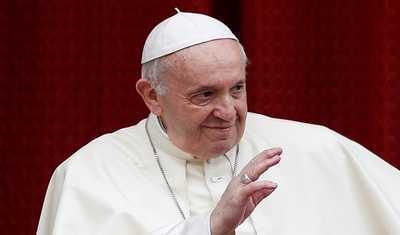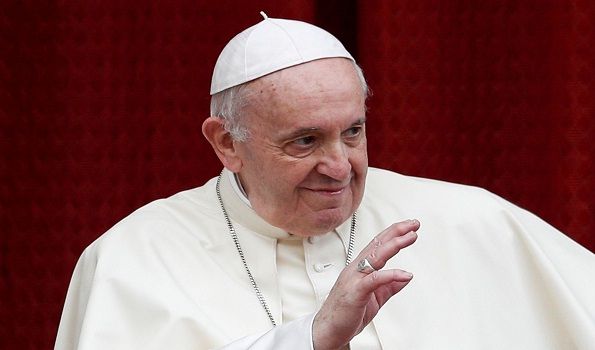Pope Francis critical after double pneumonia: What happens when a Pope dies and how is a new Pontiff selected?


Pope Francis, aged 88, is currently hospitalized in Rome due to double pneumonia. He remained in critical but stable condition. "The Pope had a quiet night and is resting," the Holy See Press Office informed journalists with a statement on Wednesday morning.
The Tuesday evening update on Pope Francis’ health noted that Pope Francis' "clinical condition remains critical but stable. There have been no acute respiratory episodes, and hemodynamic parameters continue to be stable."
"In the evening, he underwent a scheduled CT scan to radiologically monitor the bilateral pneumonia. The prognosis remains guarded," continued Tuesday evening's statement. "In the morning, after receiving the Eucharist, he resumed work activities.”
Twice-daily statements have kept the faithful informed about the Pope’s health since he was admitted to the Agostino Gemelli Hospital in Rome on Friday, 14 February, following a bout of bronchitis.
He is currently being treated for double pneumonia and a health update last week noted that he is also showing signs of mild renal insufficiency, which appears to be under control.
In light of his health situation, discussions about the future leadership of the Roman Catholic Church have intensified.
What Happens After the Pope Dies?
Immediately after the pope has passed away, a document known as the Apostolic Constitution drafted by John Paul II himself in 1996 enters into effect. At this point, the pope’s camerlengo (chamberlain) verifies the pontiff’s death by calling him by his Christian name three times. If there is no response, the chamberlain declares “The pope is truly dead.”
The confirmation used to be accompanied by the chamberlain tapping the pope’s forehead three times with a small silver hammer, but the tradition fell into disuse after Pope John XXIII’s death in 1963.
The Vatican follows a strict protocol for dealing with the death of a pope. Word is passed through the Church’s civil service – the Curia – and foreign ambassadors and heads of state are informed officially. Vatican Radio then flashes news of his death around the world. In many cities, churches ring their bells to announce the death.
Pope's body was then removed from his apartment, which was then locked and sealed. A small ceremony takes place during which the pope’s Fisherman’s Ring and papal seal are broken. Today it is a symbolic act, but historically it was designed to prevent impersonation and forgery.
No images or recordings of any kind are permitted to be taken apart from portraits of the pope after his corpse has been suitably prepared to the satisfaction of the camerlengo (the cardinal responsible for managing the Vatican during the period between popes).
Burial procedure
Each pope is able to specify his own funeral arrangements. Tradition calls for nine days of mourning during which there is a papal interregnum, or interval during which the Catholic Church is without a spiritual leader. Burial occurs four to six days after death of Pope.
Heads of state and government as well as religious leaders from around the world attend the funeral.
The Vatican Grottoes, located beneath St. Peter's Basilica, serve as the final resting place for many popes throughout history. However, Pope Francis has expressed his wish to be buried in Santa Maria Maggiore Basilica in Rome.
How is a successor chosen?
The election of a new pope does not begin until 15 days after the death of a pontiff. In the meantime, cardinals from around the world begin arriving at the Vatican to participate in a centuries-old ritual called the conclave (from the Latin cum clave meaning “with key”).
Those cardinals involved in electing the new pope must be under 80. Before the conclave, coalition-builders begin forging alliances. Senior cardinals who may themselves have little chance of becoming pope can still exert a considerable influence over others.
On the day the conclave begins, the cardinals move in procession into the Sistine Chapel, where they will have the option of holding an initial ballot on the first day. This ballot often serves to gauge the level of support for various candidates. On the next day the voting process begins.
Throughout the entire conclave, the cardinals are sequestered in the Vatican without outside contact until they choose a new pope.
A two-thirds-plus-one majority is needed for a successful election, otherwise the vote is repeated. If the right percentage is not met after 12 to 13 days, a simple majority vote may be imposed. Cardinals cannot vote for themselves and may be eliminated from consideration if they campaign for support.
Until a successor has been elected, there will be four ballots a day. The ballot papers are burned in an old stove after every second vote. Different chemicals are mixed in to produce black smoke for an inconclusive vote or white smoke for a successful vote, a signal to the public that a new pope has been chosen.
The pope-elect that emerges from the voting is asked whether he accepts becoming the supreme pontiff. If he answer is yes, he is asked what name he wishes to take.
He then goes to the Room of Tears, a small room next to the Sistine Chapel, where he dresses himself in white papal robes, before returning to the conclave to sit near the altar and have a new Fisherman’s Ring put on his finger. Then cardinals then file by to pay homage to the man who from that point on will be considered Christ’s representative on earth.
The senior cardinal deacon will then step onto the central loggia of St. Peter’s Basilica to proclaim “Habemus Papam” – we have a pope – and the new pontiff will appear on the balcony to deliver his first apostolic blessing to the world.
(Inputs from Deutsche Welle)

